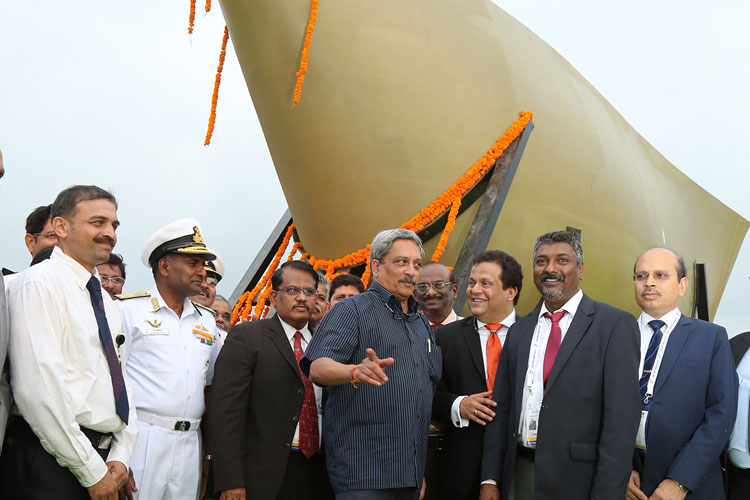To bolster Navy’s underwater surveillance capability, the Indian Navy inducted 4 new indigenous sonars. These are namely Abhay, Humsa, NACS and AIDSS.
- Abhay: Abhay is a compact hull mounted sonar for shallow water crafts. The technology that has been used in Abhay is an advanced active-cum-passive integrated sonar system which has been designed and developed for the smaller platforms such as shallow water crafts and coastal surveillance or patrol vessels. Abhay is capable of detecting, localising, classifying, and tracking sub-surface and surface targets in both its active and passive modes of operation. The prototype of this compact sonar has successfully completed all user evaluation trials to demonstrate the features as per the Naval Staff Qualification Requirements.
- Humsa UG: Humsa UG is an upgrade for the Humsa sonar system. It is designed for upgrading the existing Humsa sonar system and is built to prevail its command over high seas. This system is proposed to be installed on seven ships of three different classes.
- NACS: NACS is an acronym for near-field Acoustic Characterisation System. NACS determines the in-situ performance of the sonar system used to find the frequency-dependent 3-D transmission and reception characteristics of the sonar. It is also used to measure the magnitude and phase characteristics of the sonar transmission and reception electronics and transducers.
- AIDSS: AIDSS stand for Advanced Indigenous Distress sonar system for submarines. It is a distress sonar or an Emergency Sound Signalling Device which is used to indicate that a submarine is in distress to enable quick rescue and salvage. It is a life-saving alarm system designed to transmit sonar signals of a pre-designated frequency and pulse shape in an emergency situation from a submarine for long period, so as to attract the attention of passive sonars of ships or submarines in the vicinity and all types of standard rescue vessels in operation.
The system has been developed and designed by Naval Physical and Oceanographic Laboratory (NPOL), a DRDO laboratory based in Kochi, Kerala.
The four systems will make the Indian navy self-reliant in the critical area of surveillance technology.







